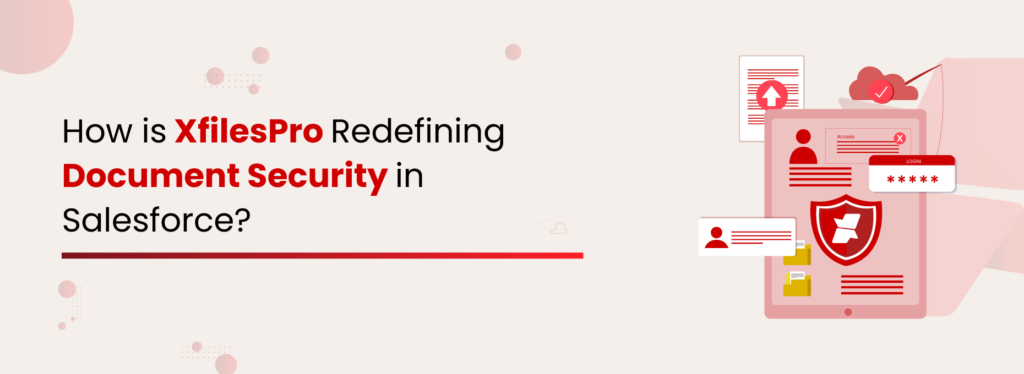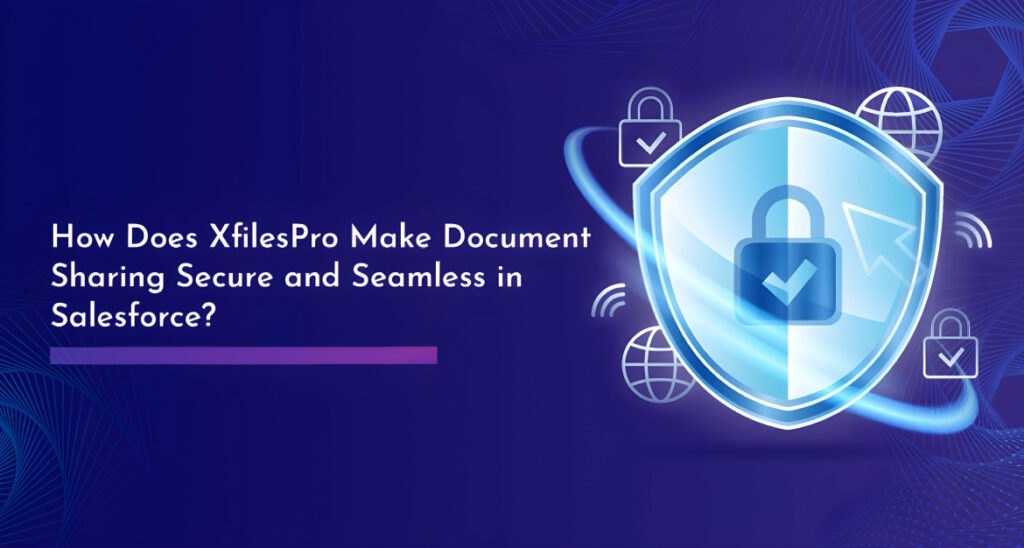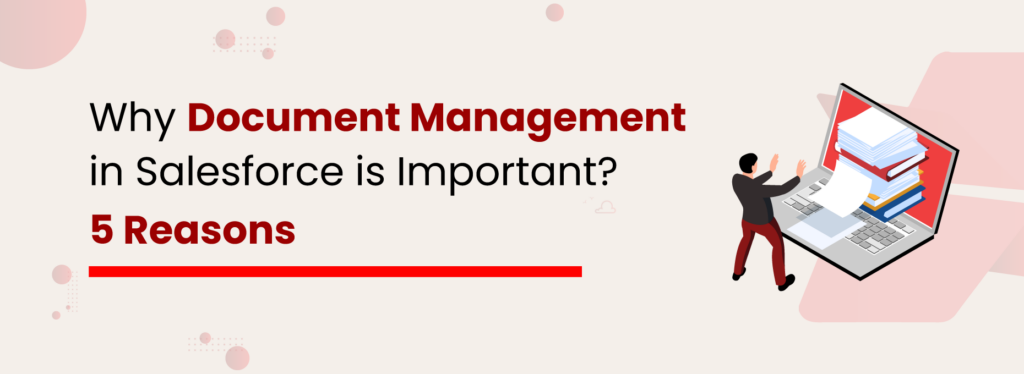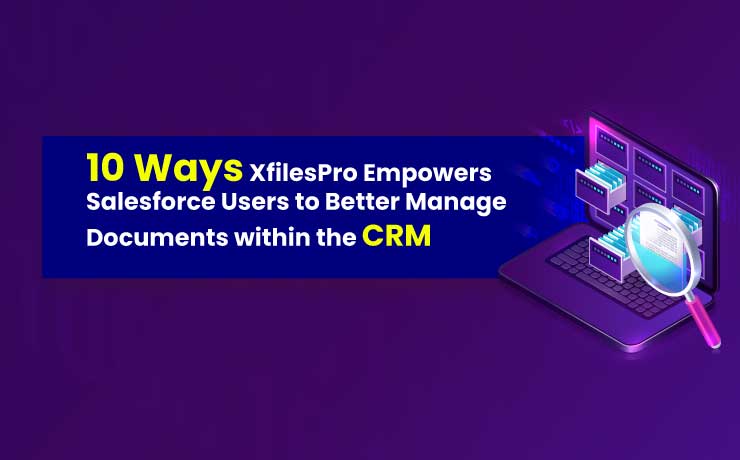Salesforce CPQ End-of-Sale: What to Do Next?

In early 2025, Salesforce confirmed that its flagship CPQ solution has entered “end‑of‑sale” (EOS) status. It means that no new Salesforce CPQ licenses will be sold to new customers. Existing customers retain full access, support, and license renewals—for now. No new features or roadmap enhancements will be delivered. EOS is not the same as End‑of‑Life (EOL). The product isn’t being forcibly retired yet, but Salesforce’s investment is squarely focused on its successor: Revenue Cloud Advanced and Revenue Cloud Billing. How the End of Salesforce CPQ Affects Existing Users For organizations currently using Salesforce CPQ, the EOS announcement isn’t an immediate shutdown, but it does bring some concerns: Support & Maintenance Slowdown Bug fixes, patches, and customer support are slowing down, as resources shift to new platforms. While standard support remains in place, response times are increasing and prioritization is minimal. No New Features CPQ is now frozen in time, which means there’ll be no enhancements, no AI roadmap. Improvements implemented over the past four years are minimal, and now, history. Cost & Maintenance Risk Existing customers may face rising IT costs, with outdated customizations becoming brittle at a higher cost, without platform updates, integrations, and add-ons risking failure over time. Stagnating Ecosystem Partner expertise is drying up: consultants, systems integrators, and ISVs are pivoting away from outdated CPQ. Hiring certified CPQ talent could become more difficult and expensive. No Migration Path Revenue Cloud Advanced (RCA) is not a like-for-like upgrade; it’s a rebuild, not a plugin. Data, configuration, pricing, and quoting logic all need re‑mapping into new objects and processes. What Led to the End-of-Sale for Salesforce CPQ? Even before the end-of-sale announcement, CPQ was running into foundational issues: Narrow coverage: CPQ does a decent job with quoting, but that’s where it stops. It doesn’t natively support billing, subscriptions, or revenue recognition, leaving users to patch in other tools to handle the full quote-to-cash process. Manual-heavy: Custom pricing, special approvals, and exceptions often can’t be handled with automation. Admins and sales teams end up resorting to manual overrides or custom scripts, which are costly in time and prone to error. Scaling issues: As businesses grow, so do their pricing models. CPQ starts to stumble with large product catalogs, multi-layered pricing structures, or anything usage-based. It simply wasn’t built for that kind of complexity. Fragmented integrations: To fill in the gaps (like billing or rev rec), companies often bolt on other managed packages. This not only makes the tech stack heavier but also leads to slower performance, disjointed workflows, and higher maintenance overhead. Alternatives to Salesforce CPQ With Salesforce CPQ reaching end-of-sale, now is the ideal time to explore alternatives. Transitioning to newer CPQ solutions allows businesses to future-proof operations, reduce technical debt, and adopt more efficient, AI-driven quote-to-cash processes tailored to today’s dynamic market demands. Revenue Cloud Advanced (RCA) and Revenue Cloud Billing (RCB) RCA: A modern, API-first, Salesforce native solution built on standard objects with intelligent quoting, pricing procedures, AI-driven approvals, and contract management. RCB: Extends this with billing, invoicing, payments, and revenue recognition—delivering a full end-to-end suite. However, there are key considerations: Requires multiple licenses (RCA, RCB, Revenue Lifecycle Management, etc.). No direct migration path from traditional Salesforce CPQ. Steeper learning curve for admins, architects, and users. Longer implementation timelines and higher overall costs. Third-Party CPQ Solutions There’s a growing market of CPQ-focused AppExchange solution providers offering robust, Salesforce-integrated tools. These modern CPQ solutions are often: More flexible and industry-specific. Faster to implement with pre-built templates. AI-enhanced, with guided selling, deal optimization, and dynamic pricing. Often more cost-effective for mid-market and scaling businesses. Choosing the right third-party CPQ depends on your current Salesforce setup, pricing models, and future scalability needs. 2X Faster Salesforce Quote-to-Cash With Document Automation Get the full Datasheet XfilesPro DocGen: Move Faster From Salesforce CPQ to Q2C Process As Salesforce CPQ approaches the end of its sales cycle, many companies are rethinking how they handle their sales processes. This isn’t just about switching tools; it’s a chance to completely change how they manage everything from creating quotes to collecting payments. The aim is to make the entire process faster, more efficient, and ready for future challenges. That’s where XfilesPro enters the picture as a purpose-built solution. Instead of just filling a gap in the CPQ system, XfilesPro improves and speeds up your entire process from quote to cash. It works closely with Salesforce to make quoting easier, automate document management, and eliminate delays in moving from contract to payment. Speed Up Sales with Automated Document Generation With Salesforce CPQ phasing out, you might be thinking: “What about all the quotes, proposals, and contracts we generate every day?” A Detailed Guide for Salesforce Document Generation Process Download Now XfilesPro automatically creates professional, dynamic documents, like quotes, proposals, contracts, and even invoices, using Salesforce data. It also supports: Custom or Pre-Approved Templates tailored to your brand and legal standards. Dynamic Data Mapping from Salesforce records and objects. Automated Approval Routing directly from Salesforce workflows. Integrated E-Signature support for fast, compliant sign-offs. User-friendly interface that requires no complex training. Streamline File Management for CPQ The CPQ process includes a ton of files. Quotes, MSAs, SOWs, SLAs—the list grows fast. And with Salesforce’s storage limits, it doesn’t take long before you’re hitting walls. You can store documents externally (on platforms like SharePoint, Google Drive, or S3) while still accessing and managing them directly within Salesforce. With powerful Salesforce document management features like: Folder structures for easy access and organization. Automated file migration based on predefined criteria. Access controls to prevent unauthorized access. File/folder preservation to safeguard important documents. XfilesPro makes file handling seamless. This helps you stay compliant, free up valuable Salesforce storage, and gain additional benefits like version control, secure sharing, and improved team collaboration. We’ve explained in depth how a simplified CPQ process can accelerate your quote-to-cash journey—read the full blog here. Poornima GConnecting businesses with top SaaS and CRM solutions through engaging content All Posts
20 Ways XfilesPro Helps You Slash Operational Costs in Salesforce

Salesforce file management has its limitations that every Salesforce admin is aware of. While many users highlight limited storage space as the primary issue, the real challenge goes beyond that. It’s not just about how much you can store; it’s also about how effectively you can manage it. This includes aspects like improved collaboration, seamless document access, enhanced security, and easy search and sharing. Unfortunately, Salesforce as a CRM does not provide these features. That’s why businesses move their files to external storage like SharePoint, Google Drive, OneDrive, or Amazon S3. These platforms offer end-to-end file management solutions that are not possible within Salesforce But you can’t just magically transfer files. Doing it manually means downloading everything from Salesforce, uploading it again to external storage, and wasting hours, only to end the day feeling completely burnt out. File management tools like XfilesPro help companies declutter, automate processes, and significantly reduce costs—all without compromising on performance, security, or compliance. So, How Does XfilesPro Help You Slash Operational Cost? XfilesPro doesn’t just save on Salesforce file storage. It cuts down manual work with automation, reduces IT overhead with easy-to-manage file integrations, and helps avoid compliance slip-ups with secure, traceable file movement. That’s less time spent, fewer tools needed, and way more value out of your Salesforce investment. Let’s break it down: Cut Direct Storage & Licensing Costs Reduced Salesforce Storage Costs by 80%+ Salesforce charges up to $5/GB/month, and Amazon S3 at just $0.023/GB/month. By using XfilesPro to offload files to more cost-efficient cloud storage solutions like Amazon S3 or SharePoint, businesses can reduce their Salesforce file storage cost by up to 80%, saving thousands annually. Eliminate Manual File Transfers Transferring 1,000 files manually can take days. The process of downloading, uploading, and organizing each file consumes a significant amount of time. XfilesPro automates this entire process, reducing manual work and saving your team hours every week. Additionally, manual transfers are prone to errors, which increases the chances of missing some files or experiencing transfer failures Bulk Migration of Historical Files XfilesPro lets businesses bulk migrate large volumes of legacy files from Salesforce to external storage in one seamless transfer. This saves on storage costs and eliminates the manual effort of cleaning up data. Use Existing Subscriptions Smartly If your business has already subscribed to Microsoft 365, Google Workspace, or Amazon Web Services, XfilesPro integrates seamlessly with these platforms to make full use of their storage capabilities. This way, businesses don’t need to purchase additional storage or tools, maximizing existing investments. Secure File Sharing Without Licenses Sharing files with third parties or external collaborators typically requires extra Salesforce licenses. With XfilesPro, you can share files directly from external storage or Salesforce, eliminating the need for additional licenses. Automate Workflows and Save Time Organize with Smart Folder Structures XfilesPro allows automatic folder creation based on predefined rules like record types, departments, or case types. This level of automation eliminates the time-consuming process of manually organizing documents, reducing administrative costs, and keeping your storage system tidy. No-Code Customizations XfilesPro lets you set up file movement, organization, and syncing through a no-code configuration. This removes the need for dedicated development resources, lowering IT costs and giving teams the flexibility to adapt the tool as needed. Automated Workflows Based on File Events XfilesPro allows you to create triggers and automated workflows based on file movements. For example, when a contract is uploaded to Salesforce, XfilesPro can automatically move it to a “Contracts” folder in external storage and tag the file. A trigger can also be implemented to create subfolders when a record is added. This automation reduces the need for manual oversight, accelerates decision-making, and lowers operational costs. Read More: 8 Ways XfilesPro Automates File Management Process in Salesforce Drag-and-Drop Simplicity Uploading, moving, or managing files becomes as easy as drag-and-drop. This reduces the learning curve and eliminates training costs, allowing even non-technical users to quickly manage their files without IT support. Faster Onboarding for New Users Since XfilesPro integrates directly with widely used platforms like Google Drive and SharePoint, new employees can quickly get up to speed with the document management system without needing extensive training. This reduces onboarding costs and accelerates time-to-productivity. Boost Team Efficiency Across Departments Access Files from Inside Salesforce Even after documents are moved to external storage, XfilesPro makes it possible for Salesforce users to access and manage them directly within Salesforce. This eliminates the need for switching platforms or logging in to multiple tools, saving time and reducing operational friction for employees. Remote & Mobile-Friendly Access External cloud storage like Google Drive, OneDrive, and SharePoint offers mobile access, allowing field teams or remote workers to upload and access documents anytime, from anywhere. This flexibility enhances efficiency and reduces travel-related costs for teams that previously needed to be on-site. External File Collection Made Simple XfilesPro enables you to collect files from customers, vendors, or partners through secure, one-click email upload links, no Salesforce login required. This simplifies collaboration, reduces back-and-forth emails, and eliminates the need for costly third-party file collection tools. Boost Cross-Functional Collaboration With all teams working in the same centralized storage, communication becomes smoother, and collaboration is streamlined. This reduces the need for multiple communication tools and prevents unnecessary back-and-forth between teams, ultimately saving time and reducing inefficiency. Community Portal File Storage For businesses with customer or partner portals(Community Portal), XfilesPro ensures that any files uploaded through these channels are stored directly in external storage. This reduces Salesforce storage consumption, enhances security, and minimizes costs by reducing the need for additional storage capacity. Field Service-Friendly Field agents use the Salesforce FSL app to capture images, reports, and invoices. With XfilesPro, these files can be transferred directly to SharePoint from the field. This eliminates the need for agents to manually send files via email or upload them later, cutting down on administrative overhead and ensuring instant documentation. No Need for Additional Document Management Tools External platforms like SharePoint or Google Drive can serve as your document management system (DMS),
How is XfilesPro Redefining Document Security in Salesforce?

As businesses embrace digitalization, manual document management has significantly reduced—but this shift has brought new challenges, particularly in the security landscape. Enterprises rely on software services to streamline operations. Salesforce is one of the most preferred CRM platforms. But while everyone talks about Salesforce data breaches, it’s crucial to recognize that unauthorized access to documents can also lead to serious compliance risks. Security isn’t just a checkbox; it’s a necessity. At XfilesPro, we prioritize safeguarding your documents. But before we dive into how we do that, let’s explore why Salesforce document security is essential for your business. Document Security in Salesforce Document security ensures files are safeguarded against unauthorized access and potential breaches. With increasing cybersecurity threats, implementing strict access controls, audit logs, encryption, and compliance management is essential to safeguarding business-critical documents. Organizations must go beyond basic storage and ensure that document access is restricted based on roles, activity is monitored, and file-sharing is controlled. On-Demand Webinar 5 XfilesPro Features to Boost Document Security & Collaboration in Salesforce Watch the free Webinar! Why Document Security in Salesforce Matters Salesforce is generally safe to use, while it provides extensive security measures for data, documents stored within the platform often remain vulnerable. A breach of sensitive documents can have consequences just as severe as a data breach. This can lead to various risks as follows Unauthorized Access to Sensitive Information Not all Salesforce users within an organization require access to every document. Without proper security controls, confidential files may be accessible to unintended users, leading to data leaks and privacy concerns. Suppose sensitive information falls into the wrong hands. In that case, it can be misused—resulting in threats, data theft, or manipulation of critical records such as customer data, financial information, intellectual property, and trade secrets. Compliance Risks in Regulated Industries Industries like finance, healthcare, and legal services operate under strict compliance regulations. Laws such as GDPR, HIPAA, and SOX mandate secure document storage and controlled access, ensuring only authorized individuals can view sensitive information. Failure to comply can lead to hefty fines, legal consequences, and reputational damage. Lack of a Centralized Document Security System Businesses often store Salesforce documents across multiple locations—Salesforce Files, third-party storage platforms, local drives, and cloud services. Without a unified security strategy, tracking document access and maintaining consistent protection across all storage points becomes a challenge, increasing the risk of security gaps. Audit Issues Enterprises need to keep a clear record of who accessed, modified, or shared documents to meet compliance requirements and internal audits. Without a proper audit system, tracking document history becomes challenging, making it harder to spot unauthorized changes, ensure accountability, and avoid compliance risks. Take a financial organization, for example. They handle countless customer documents containing sensitive information. If these documents are not properly secured, they could be exposed to unauthorized users, leading to compliance violations, financial losses, and reputational damage. XfilesPro: Redefining Document Security in Salesforce With businesses managing more and more documents in Salesforce, keeping them secure and accessible isn’t always easy. Security, compliance, and storage limits make it crucial to have a smarter solution. That’s where XfilesPro comes in. But what exactly does XfilesPro do? XfilesPro The One-Stop Solution for Advanced Document Management in Salesforce Download the Datasheet! XfilesPro is a document management and collaboration application built specifically for Salesforce. It seamlessly integrates with external cloud storage solutions like Google Drive, SharePoint, OneDrive, and AWS S3. By reducing the need for additional Salesforce storage, XfilesPro helps cut costs while automating file migration to boost productivity. At the same time, it ensures your documents remain safe and secure. Let’s dive into how XfilesPro protects your documents. Role-Based Access Control In any business, controlling who can access, edit, or share documents is crucial, with XfilesPro access and permissions based on their role in Salesforce. Permissions can be assigned during template creation and secured at different levels: by Profile, Public Group, individual users, or open access, giving complete control over document security. For businesses using SharePoint, users can be restricted access to a particular site and not all sites. This is also true with Amazon multi-buckets. Secure Sharing For businesses, it’s important to collaborate on documents both internally and externally. However, accidentally sharing a document with the wrong person can lead to serious issues. To prevent this, XfilesPro offers secure sharing features, allowing you to send documents via email with password protection. An expiration date and time can also be set, ensuring the file becomes inaccessible after the specified period. Encryption & Secure File Transfers Documents are vulnerable to breaches, leaks, and unauthorized access without proper encryption and secure file transfers. Security isn’t just about who can access files—it’s also about how they’re stored and shared. XfilesPro encrypts documents both at rest and in transit, follows global security standards, and ensures that encryption keys stay protected during every transaction. Effortless Reauthentication Businesses relying on SharePoint, Google Drive, or AWS S3 for document storage via Salesforce often face authentication token expiry, which blocks access to critical files. This disrupts workflows, delays tasks, and requires IT intervention to restore connections. To solve this, XfilesPro offers a Reauthenticate button. With a single click, it refreshes authentication, prevents downtime, ensures seamless access, and keeps operations running smoothly—without security risks or IT hassles. Real-Time Document Tracking & Audit Logs Businesses struggle to track document activities, leading to unauthorized modifications, security risks, and compliance issues. Without proper monitoring, files can be edited or shared without oversight, compromising data integrity. By utilizing real-time tracking and logging, businesses can monitor who accesses, edits, or shares information. With version history and a comprehensive audit trail, organizations can ensure security, prevent unauthorized changes, and maintain compliance with ease. Document Deletion Without proper deletion mechanisms, removing a Salesforce record can leave orphaned files and folders in external storage. This gap risks compliance retention and sensitive data exposure. XfilesPro automatically deletes all associated external files and folders when a record is removed, ensuring complete document removal. This upholds compliance retention standards. Compliance-First Document
How Does XfilesPro Make Document Sharing Secure and Seamless in Salesforce?

Every business is built on teamwork. And, the success of teamwork is defined by effective communication and collaboration among teammates. One of the key components of efficient collaboration is document sharing inside Salesforce. Whether it’s sharing reports, proposals, presentations, or other vital documents, the ability to seamlessly exchange information inside the CRM is crucial for boosting productivity and innovation. It’s the driving force behind achieving business goals. The most popular document management application for Salesforce, XfilesPro understands the significance of securely and effortlessly distributing documents within the Salesforce platform. So, XfilesPro offers many advancements to streamline this everyday process. The Enhanced Security Model for Document Exchange XfilesPro provides two distinct capabilities based on whom you share the document in order to facilitate the information exchange between multiple parties. Let’s look into each of those. Internal Document Sharing: Here is where you can share files, documents, and information within a team or organization. This type of sharing occurs among employees, departments, or project teams who work together within your company. The key purpose of internal document sharing is to effectively collaborate, communicate, share knowledge, and enable workflow management for your employees. To ensure security during this process, XfilesPro upholds certain standards. XfilesPro permits only authorized persons to share documents with other users, profiles, and groups. Here, Admins have complete control over deciding who can be entitled as authorized users and the authorized users can decide who can view, edit, and delete a file. This means that any unauthorized individuals do not share or access your Salesforce documents so you can rest assured about its security. External Document Sharing: This involves sharing documents and information with individuals or entities outside of your organization. To be specific, external document sharing occurs with external stakeholders such as leads, vendors, partners, customers, or suppliers. The key purpose of this way of document sharing is to enhance collaboration and communication with external parties, which is vital to the business’s success. To ensure security during external document sharing, XfilesPro has a specific criterion to meet. While sharing a document, the owner of the document needs to share a password-protected link via email to the external user. This link is one-time usable and has a certain validity time defined by the owner. Therefore, it is ensured that the document remains inaccessible to irrelevant users without the owner’s permission. In brief, XfilesPro ensures there is no security breach on a document while sharing internally or externally. Going Above and Beyond to Preserve Document Security XfilesPro’s commitment to security extends beyond document sharing. As you know, XfilesPro takes care of your complete document management in Salesforce. To not let your business suffer from the limited storage space of the CRM app, XfilesPro moves your files from Salesforce to any of your preferred external storage including SharePoint, AWS S3, Google Drive, and OneDrive. Here, most users are worried about document security post-migration to external storage. The good news is that XfilesPro has many more advanced capabilities that safeguard your documents in the outside repository. Here are two of them. Access Control: This is the fundamental component of document security which empowers Admins to provide user/profile level control on document creation, deletion, download, and upload. That means Admins can define which user/profile should obtain different kinds of document control in the external storage. Access Control plays a crucial role in safeguarding the confidentiality of the file and mitigating risks of breaches. Folder/File Preserve: You can leverage the benefits of Folder/File Preserve functionality by enabling the document deployment to a particular user/group/profile. This functionality ensures that only people who belong to any of these categories will be able to access a particular document. Here also, the owner can decide who needs to be added under any of these categories and what documents they can use. Again, security is guaranteed! In a nutshell, XfilesPro delivers superior functionalities to ensure document security in Salesforce. If your business wants to secure Salesforce documents with XfilesPro, please connect with one of our experts. Deeshna CDeeshna is a five-year experienced writer in the field of B2B, writing a wide range of content types that drive the success of SaaS products. All Posts www.xfilespro.com
How to Choose a Document Management System for Salesforce? 5 Factors CTOs Need to Consider

A well-versed Chief Technology Officer (CTO) is knowledgeable in road mapping development and overseeing the current technology to align it with their business. No surprise, CTOs who leverage cloud platforms like Salesforce prioritize investing in an advanced document management system (DMS) for their sales or any other internal teams to enhance operational efficiencies, and save time and cost. Being a CTO, if you find manually handling documents is a nail-biting task for your team, it clearly indicates that your team lacks the support of a powerful document management system for Salesforce. Having a DMS helps you not only improve document organization, accessibility, and scalability but also enhance employee productivity, collaboration, and cost savings. However, the investment in a DMS is not a walk in the park. There are certain factors that you need to take into account when adopting a document management system for your operations. How to choose a Salesforce Document Management System? When conceiving the decision to embrace a document management system for Salesforce, it’s important to evaluate your requirements and align them with the solution you’re investing in. Here are some key factors to check off as you start your assessment of a document management system. #1. Centralized Document Storage A DMS must foster a centralized location to store, manage, and access documents for users. Centralized document storage refers to the practice of storing all documents, files, and digital assets in a single, unified, and easily accessible location. Regardless of how big or small your company is, nurturing an efficient method to organize your documents in a centralized repository is crucial to ensure strong document security, simplified access, faster operations, and improved collaboration. The more readily accessible documents are for employees, the smoother and more efficient the process becomes. #2. Real-time Collaboration & Versioning Whether your team shares office space or works remotely, they need to access the same document and co-author it simultaneously. This real-time document collaborative capability of a document management system helps your team to improve business efficiency and reduce the chance of misunderstandings and delays. In addition, a smart DMS prevents headaches by tracking, editing, and providing multiple versions of the document, which ensures that your team members can see all the modifications and always access the latest version. #3. Compliance and Risk Management Every industry puts forward different compliance requirements and obligations. But it’s not easy to adhere to them always. Industries like finance, healthcare, and legal services are bound to ensure the retention of the documents for a longer period of time. If your business falls under this category, it’s mandatory to ensure that the document management system you want to invest in for Salesforce meets those standards and helps you retain your documents. Keep in mind that non-compliance actions not only set you up for legal issues and hefty fines, it can also break the brand reputation and customer trust, which will ultimately take a toll on your bottom line. #4. Document Security A superior Salesforce document management system provides you with the option to move your documents from the CRM and store it in an external cloud as part of storage space clear up. You can set the permission to ensure individual teams/users can only access information and documents that they need. As an example, a member of your marketing team won’t be given access to Sales or HR information — he/she will only be able to view certain marketing documents. Here, authorized admins gain complete control over the documents, where he/she can control who can view and access them. This capability keeps your data and documents secure and compliant while providing a clear picture for the admins of what is happening within the system. #5. Cost and ROI When investing in a document management system, you need to drive significant cost-saving and ROI. As the DMS eliminates the requirement for paper usage, storage space, and manual efforts, you can save on operational expenditures. Moreover, the heightened efficiency and productivity achieved through the implementation of a DMS has the potential to catalyze increased revenues, which delivers a substantial return on investment. Bottom Line What are your thoughts, dear CTO? Do you think investing in a document management system would be a great feat for your business? If your answer is ‘yes,’ try XfilesPro, the popular document management application for Salesforce that checks off the above criteria. XfilesPro takes complete care of your Salesforce documents, from their generation stage within the CRM and stores them in external cloud storage (such as SharePoint, AWS S3, Google Drive, and OneDrive) to enable collaboration for users. If you wish to discover how XfilesPro can change the dynamics of your organization’s document management strategy, connect with us for a personalized demo! We empowered many CTOs like you to do better for their business! AMARLAL
Why Document Management in Salesforce is Important? 5 Reasons

Data and documents are at the center of every business process in Salesforce. However, the profuseness of documents always creates challenges for users as an effective Salesforce Document Management System is not everyone’s forte. Having said that, your challenges in managing Salesforce documents shouldn’t impede the growth of your business. As a Nitro study reports, 50% of employees spend productive time creating and managing documents, which shows the minimal time they have left to focus on their high-value work. The only solution for this challenge is embracing a robust document management solution for Salesforce! Before learning how can such a solution help you, let’s take a look at document management in Salesforce. What is Salesforce Document Management System? Document management in Salesforce refers to how a company handles its day-to-day documents within the CRM platform. This includes creating, organizing, storing, accessing, and managing files such as PDFs, Word documents, JPGs, and PPTs. Documents come through many means, such as email attachments, manual uploads, or 3rd-party apps. Whether the business falls in the range of a small, medium, or large scale, users are required to manage a plethora of documents. Document Management Features in Salesforce Salesforce is now more than just a CRM, it’s a full-blown ecosystem that powers businesses with automation, AI, and analytics. Let’s explore Salesforce document management capabilities: XfilesPro The One-Stop Solution for Advanced Salesforce Document Management Download the Free Datasheet! Attachments Attachments provide a basic way to add files directly to Salesforce records. Users can upload supporting documents such as receipts, invoices, or contracts. Key Features: Quick and easy way to attach files to records Allows users to reference documents within customer or project records Limitations: There is no version control, making it difficult to track file updates Limited metadata support, reducing searchability Documents Tab The Documents Tab allows businesses to store and organize files within individual Salesforce records, such as accounts, opportunities, and cases. This feature is particularly useful for attaching contracts, proposals, or invoices to specific business transactions. Key Features: Simple document storage within Salesforce records Supports basic file uploads and downloads Useful for record-specific file management Limitations: Cannot be used for global file sharing across the organization Lacks advanced document lifecycle management tools Salesforce Knowledge For businesses managing articles, FAQs, and documentation in a structured format, Salesforce Knowledge could be the best solution. It serves as a self-service knowledge base where employees and customers can easily find solutions without repetitive inquiries. Articles can be linked to cases and records, making it highly beneficial for customer support teams. Key Features: A centralized knowledge base for quick access to information Supports article categorization and search functionality Can be linked to customer support cases for improved service efficiency Limitations: Primarily designed for knowledge management, not general file storage Limited customization for broader document workflows Files Home Files Home serves as a centralized hub where users can store, manage, and collaborate on documents within Salesforce. It provides a unified view of all files associated with records, making organization and retrieval seamless. Users can upload various file types, including documents, spreadsheets, presentations, and images. Key Features: Centralized file storage with easy access to related records Supports multiple file formats Integration with Chatter and Communities for enhanced collaboration Limitations: Limited metadata support for files Lacks advanced document management capabilities Salesforce CRM Content Salesforce CRM Content is a dedicated content management system designed for organizing, sharing, and tracking documents across an organization. It includes version control, document categorization, and advanced search functionality, ensuring you can efficiently manage files. Additionally, it enables access permissions and workflow automation for document approvals. Key Features: Advanced file organization with version control Granular access permissions for document security Approval workflows for compliance and document governance Limitations: Requires a separate license and additional configuration Not cost efficient Not the best choice for teams needing lightweight file management Why You Need A Salesforce Document Management Solution It’s widely held that businesses managing millions of documents can benefit from document management solutions. This belief is true considering the advantages that the implementation of a document management system (DMS) in Salesforce can drive for your business. XfilesPro Choosing The Right Document Management Application For Salesforce Get the Free Datasheet! While Salesforce offers several capabilities for document management, many organizations seek the support of a 3rd party document management solution that covers their end-to-end requirements. Five reasons why a Salesforce document management system is important: Overcoming Salesforce Storage Limit Salesforce’s limited file storage makes it challenging to manage a high volume of documents within the CRM. However, a smart document management system can help by automatically offloading large volumes of documents from your Org, freeing up space. This not only optimizes storage but also enhances platform performance, and reduces load time enabling efficient document management in Salesforce. Huge Cost Saving Once you exceed the Salesforce file storage limit, you need to upgrade the storage space for a certain cost. What if that space also gets exhausted? You will upgrade it again. But how long can this strategy last as a sustainable approach, considering the money loss associated with it? With an efficient Salesforce document management solution, you can address this concern by eliminating the need for storage upgrades. Documents are moved out of Salesforce, and the file storage space is always freed up. Enhanced Business Efficiency Adopting a Salesforce document management system boosts your productivity by reducing the time and effort needed to build, manage, and store documents. For instance, bulk contract creation, approval, and storage on a different platform can be automated in Salesforce. The more you minimize document management time, the more time workers have to focus on strategic tasks, speeding up decision-making and boosting overall efficiency. Seamless Scaling As your business grows, so does the number of documents you need to manage. With a Salesforce document management system, whether you’re scaling in terms of geographic regions, departments, or product lines, the system grows with you. It gives you the capacity to manage an increasing amount of content
10 Ways XfilesPro Empowers Salesforce Users to Better Manage Documents within the CRM

10 years…And it just went in the blink of an eye. From being launched in 2012 as a free app supporting AWS S3 to being the most trusted, installed, and fully-fledged document management system for Salesforce today, XfilesPro made strides like nobody ever. Harish Kumar, CEO and Co-founder of CEPTES adds, “Beyond a file management system, XfilesPro has evolved to be the one-stop solution for Salesforce users’ document management needs. We’re proud to see the application empowers our customers to process a very easy workflow by playing with the mountain of files they generate every day.” It’s XfilesPro’s firm focus on the pain points of Salesforce customers that led to the incredible milestone of a ‘decade.’ Shining in the glory of 10 years, here are amazing insights about the 10 ways XfilesPro helps Salesforce users to smartly manage their documents within the CRM platform. A Journey From Document Creation to Storage and Collaboration No matter what task you’re carrying out, where you are on it, or who you perform it for, you will be in need of relevant documents. Being an efficient document management system for Salesforce, XfilesPro understands this requirement, playing a major role in boosting your operations with documents inside Salesforce. From the generation stage of documents to storage of themin a secure repository, XfilesPro aids you every step of the way. It’s XfilesPro’s document generation appfor Salesforce that automates the creation of documents 100% natively within the CRM platform. Named XfilesPro DocuPrime, the application automatically fetches data from multiple objects and builds your documents in any type, size, and quantity within Salesforce. And, once the document volumes mount up and threaten the storage cap, XfilesPro further assists you in moving them to your trusted external storage system so that your Salesforce file storage will remain free up, improving collaboration. Diving deeper into the blog, you will learn more about how XfilesPro executes this functionality. Zero Code Integration Between Salesforce and the External Storage From above, you have already learned that XfilesPro connects the CRM with your external storage system to readily accomplish your document management needs in Salesforce. Which are those external storage platforms that XfilesPro supports? Let’s see those. XfilesPro can integrate Salesforce with any of your preferred external cloud storage such as SharePoint, AWS S3, Google Drive, and OneDrive so that you can migrate your growing volume of Salesforce files to it. This leads to the optimization of the storage space, helping you regain the performance of the application. And, the bright side is that the integration pans out seamlessly as it demands no-code expertise from you. You can build the bridge between both platforms as easily as you plug the USB pen drives into the PCs or laptops. Strategic Approach to File Volume Management Now that you learned it’s a cakewalk to integrate your Salesforce and external storage, let us tell you how you can leverage this powerful connection for your document management requirements. As you generate a large number of files every day within Salesforce, it would collectively become massive in size, potentially causing a slowdown in your CRM system. To tackle this, XfilesPro moves your huge volume of existing files from Salesforce’s file storage space to the external repository in one go by preserving the file hierarchy. This dynamic action optimizes your overloaded storage space and helps preserve the functionality of your application. Meanwhile, discover how XfilesPro helped a global leading manufacturer move 40 TB of files from Salesforce to SharePoint In another case, if your business is required to automatically push the newly created files from the app, XfilesPro has a solution to address that requirement as well. It can automate the migrate of your Salesforce files in your preferred time interval – be it days, weeks, or months, and keep them in the external storage system. A Game Changer for Real-time Collaboration on Documents If workers can’t collaborate on documents, the chances of misunderstandings and delays will be higher. Being a modern Salesforce document management system, XfilesPro ensures that your Salesforce records are synced with respective folders in the external storage, and the modifications made on the former are reflected on the latter, and vice versa. Put differently, if you make changes to the Salesforce records, it will be mirrored in the folders of your external storage and the other way around. It’s XfilesPro’s Bi-sync functionality that comes into play here. If you’re wondering how folder syncing relates to enhanced collaboration, here’s some more light. As files are bi-directionally synced, users within your teams can collaborate on Salesforce documents while non-Salesforce users or external teams can work on the documents in the external storage, and can have the changes updated on both platforms. This in turn provides a real-time file collaboration experience, which is crucial in operations. Learn how real-time collaboration on Salesforce files boosts your employees’ productivity. Tailored Folder Format for Easy File Access XfilesPro understands Salesforce customers’ challenges in managing documents, particularly the limitations posed by the absence of an option to create a folder structure. Because, in Salesforce, individual documents are commonly accessed and saved by various users. Where a specific document is needed for multiple datasets, it can result in the creation of duplicates. This not only increases storage demands unnecessarily but can also cause confusion and miscommunication. Knowing this, XfilesPro empowers you to customize your folder structure in an external location, which helps you arrange files in a specific format that deals with the workflow. Since a pre-defined folder structure can’t be easily changed by employees, every user will know where to find relevant documents without any confusion, facilitating operations. Obtaining the Ultimate Ownership Over Documents Even though the migration of files from Salesforce to external storage becomes easier post integration, you might be skeptical about its security in a 3rd-party application. There are high chance that unauthorized users access your documents from the external environment, which will expose the confidential information they contain. To prevent the security breach here, you can leverage XfilesPro’s Access Control functionality, which empowers you to control who can
Live Webinar: Store, Manage, and Access Documents in Salesforce with XfilesPro

If you have been using Salesforce for a while, you must have faced the inconvenience that the growing volume of files created in your org. The overloaded file storage space must have brought you nothing less than a horrific file management experience in Salesforce. Have you thought about overcoming this hurdle? Or have you already taken preventive measures against it? If you’re in the first category, you know that reducing the file volume in Salesforce is not a solution as your growing business mandates more and more files. So, you can think only about a solution that can eliminate the hurdles of managing a huge number of files within the Salesforce Org. If you’re truly on the search for a solution to overcome the file management challenges, we suggest you achieve peace of mind with XfilesPro. With this no.1 file management application in AppExchange, you can simplify the complexities that growing file volumes bring in your workflow and elevate your file management experience in Salesforce. If you are curious to learn more about XfilesPro, we welcome you to join our upcoming webinar on 15th June 2023 where we will talk about how to efficiently Store, Manage, and Access Documents in Salesforce with XfilesPro. Our key speakers Sambit Samant (Principal Consultant, Product) and Shreshth Tiwari (Lead Consultant, Product) will expound on; Challenges in Document/File Management Best Ways to Manage Large Volumes of Documents in Salesforce How to Overcome Storage Limitations How to Enhance File Management Experience How to Access Files Easily Join us at 3:30 PM AEST or 11:00 AM EDT at your convenience by registering here. Hope to see you in the webinar! AMARLAL
9 Ways Salesforce Customers Can Use XfilesPro

On this 9th anniversary of XfilesPro, it feels surreal to look back and realize that it has grown to help several Salesforce customers at crucial times. With its ingenuity and instructive solution qualities, XfilesPro tops the AppExchange for file management and storage optimization in Salesforce. This blog provides a summation piece on how customers can use XfilesPro in Salesforce. To store Salesforce files in SharePoint XfilesPro is a file storage management app, and SharePoint is one of the external cloud storage it supports. SharePoint has always been a reliable option for storage and several XfilesPro customers are preferring it for their Salesforce. By using SharePoint, one can have seamless folder management along with many other possibilities. Another thing to be noted is that it has exclusive features for SharePoint users. To store Salesforce files in S3 Amazon Simple Storage Service is a service that provides object storage via a web service interface. This has been serving as a dynamic storage service. This is the most preferred option when it comes to enhancing your Salesforce storage through external storage support. Since it has unlimited scalability, there is no particular limit for storage. To store Salesforce files in OneDrive Microsoft OneDrive is considered one of the perfect cloud solutions that help in connecting all your business files. It makes more sense for large enterprises to have all their files stored in one place. Its rapid sync and multiple accounts are features that make it more desirable. XfilesPro supports the usage of OneDrive as an external storage optimization. To store Salesforce files in Google Drive Google Drive is a common usage for all your files to be stored. With getting your Salesforce files saved online and accessing them from anywhere, Google Drive is pretty much used by all types of users. You can securely edit and collaborate with others making the process of file optimization easy. XfilesPro also provides an option of Google Drive for having your files getting stored externally apart from Salesforce storage. XfilesPro also supports Team Drive. To store Salesforce files in On-prem systems This is the most interesting feature of XfilesPro. Not only does it support cloud storage services, but also provides the support of On-prem storage systems to have your files stored. The on-premises storage that is supported by XfilesPro is SFTP, Network Drive, and SMB. It gives its customers of all kinds a 360-degree solution when it comes to external storage optimization. To manage Community User Files Having a large enterprise with several files and users to manage, it sometimes becomes difficult to keep an eye on all the operations. With the integration of XfilesPro into your Salesforce, all the files are managed along with the community member’s files too. It is highly a tedious task that XfilesPro is going to get you sorted. To keep files in a highly structured way using folders Being a huge enterprise, we know that you deal with a huge number of files from different Salesforce org or departments. Hence having it structured is a monotonous task to cope with. XfilesPro offers a customizable folder structure that the customers get their hands on. To migrate a large volume of files from Salesforce XfilesPro supports the migration of large files at once from your Salesforce storage to external storage. This helps in a faster and more secure way to optimize your Salesforce file storage. With our expertise of 9 years in the industry, this feature is regarded as the most useful. To implement a centralized file management system with Salesforce XfilesPro helps in implementing a centralized file management system in Salesforce. This helps in the better optimization of the storage in Salesforce. Internal and external teams can collaborate on the centralized files to improve the file management system and productivity. Now that you have come across our top 9 ways of using XfilesPro, why wait? We are the perfect solution for getting your Salesforce storage optimized. Our product experts will be more than pleased to answer all our queries. Schedule your call today and be lucky enough to avail yourself of our anniversary surprises. AMARLAL
A letter from the scariest day of the year – Halloween to Awesome Admins

Bwahahahahahaha…………. Oh no! That’s the laughter of the Storage Ghoul. It comes to life whenever the Salesforce storage has been full. My, My! Hadn’t you noticed it getting accumulated? You are in big trouble. This is no harmless ghoul that can be driven away by trick or treating’. Some serious amount of work has to be done to keep it stay away from your Salesforce storage. This letter is to that Salesforce Admin who is petrified by the activation of the Storage Ghoul. Ghostly Greetings!! Hey, Salesforce #AwesomeAdmins Q. Did you come across the worst nightmare of having your Salesforce file storage complete? Did the Storage Ghoul come to life again? Fret no more. We are here for you. This time we are not going to delete or erase random files that were being done until last year. We are going to retain it and put an end to the Storage Ghoul forever. No witchcraft has come up with a spell that can bring this Ghoul back to life. No spiders are going to surf your web and nest inside your storage. You do not need to roam around your broomstick looking for a solution. This time we are going to creep the ghoul back. We all know that during Halloween, being normal is vastly overrated. Hence our costume this year to wipe out all the Storage Ghouls is XfilesPro (drumroll please!). There is no appearance for the Storage Ghoul to be in the sequel because XfilesPro will kill it hard. Dive in to know deeply about the advantages of the same. External Storage Integration: Did you think that the Storage Ghoul was ghosting you when you never heard of him in a while? No, you were wrong. It was waiting for your Salesforce storage to be full. Now that it is full, it is back in full swing. XfilesPro integrates your Salesforce app with the external cloud storage of your choice. The 3rd-party cloud platforms that are supported by XfilesPro are Google Drive, SharePoint, AWS S3, One Drive, and also on-premises storage systems (SFTP, Network Drive, SMB). Folder Management: We have observed that sometimes you get traumatized and feel like you are in a cauldron burning when asked to locate a particular file. This is because the files are scattered like bats and are difficult to catch and hold off. XfilesPro helps in the proper folder hierarchy that helps in the fetching of files in no time. Auto File Export: Exporting a large volume of files in Salesforce is not that you say Hocus Pocus and they are gone. It is a very tedious task. But nothing seems impossible with XfilesPro. Files are automatically archived alongside setting the future file migration process optimized. File View: Counting the candies you got from Halloween bowl to bowl is very time-consuming. But not in the case of Salesforce files stored externally with XfilesPro. Once the files are migrated from Salesforce to external storage, XfilesPro has made it easier to have you access or view the files from either of the storage. File Collaboration: To cope with the file management system and productivity, this feature comes into the picture. File collaboration helps in accessing centralized files with the internal and external teams. The powers of XfikesPro are getting stronger and stronger with each feature right? Isn’t this the spooktacular inspiration that you needed to drive your Storage Ghoul away? Everything\’s better with a little magic in it. We present to you XfilesPro which is full of magic and wonder. At times, to stand against some unstoppable forces we need to revitalize our resources and look for a savior in town. Thank the good spirits!! You have XfilesPro. Still, feeling eerie about the situation? Take up a call with our product experts who will use their magic wand to vanish all your doubts. Signing off! Warm Bugs and Hisses Costume Team XfilesPro E: [email protected] W: xfilespro.com AMARLAL

